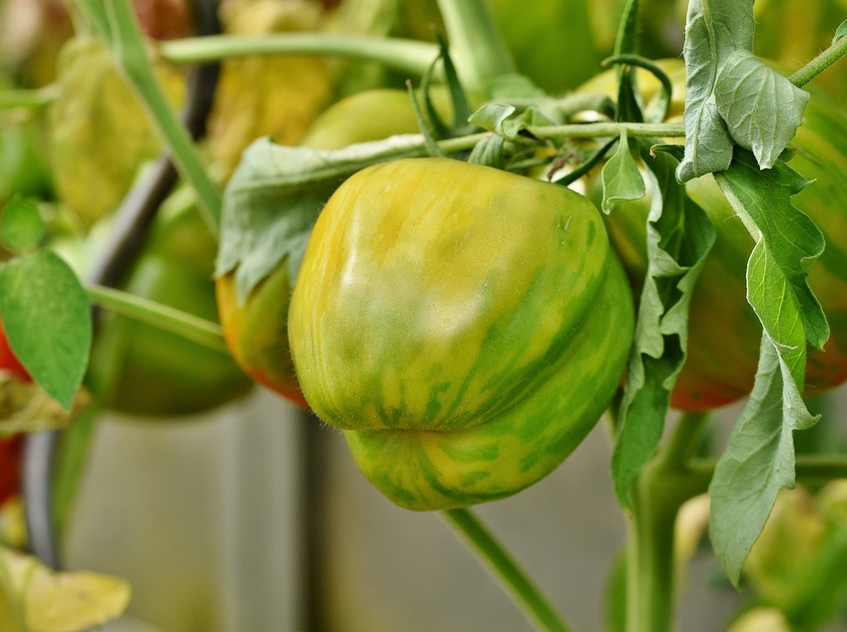Evaluation of conventional dry ashing and wet digestion methods for determination of Fe, Mn, Ni, Cu, Co, Mg, Zn, Ca, Mo and Se levels in dried samples of organic tomatoes (Solanum lycopersicum L,) by flame Atomic Absorbtion Spectrometry (FAAS)
DOI:
https://doi.org/10.20873/jbb.uft.cemaf.v3n4.novaKeywords:
tomato, FAAS, micro and macronutrientsAbstract
The aim of this study was to investigate the effect of digestion and extraction of minerals in organic tomatoes to atomic spectrometry. Fe, Mn, Ni, Cu, Co, Mg, Zn, Ca, Mo e Se levels in seven organic samples of dried tomatoes (Solanum lycopersicum L.), were determined by flame atomic absorption spectrometry. Dissolution conditions in the wet digestion method were studied by investigating several variables, including type of acid mixture and acid volume and digestion time. Comparison with conventional dry ashing methods was also made. In order to check the element losses during digestion and the accuracy of the results, all tests were repeated with statistical analysis. The nitric-perchloric acid digestion method was efficient for Ca, Mg, Se and Zn. The extraction procedure with chloride acid was similar to the nitric-perchloric acid digestion and the nitric-perchloric acid digestion was equivalent to the conventional dry ashing for the Mn. For the Cu and Mo conventional dry ashing methods was more efficient. For the Ca conventional dry ashing methods no showed significative difference for the nitric-perchloric acid digestion. The extractions with chloride acid are promised, practical and simples, with lower riscs for the manusead and ambiental contaminations.
References
Aleixo, P. C.; Nóbrega, J. A; Junior, D. S.; Muller, R. C. S. (2000), Determinação direta de selênio em água de coco e em leite de coco utilizando Espectrometria de Absorção Atômica com determinação eletrotérmica em forno de grafite. Química Nova, 23, 310-312.
Box, G. E. P.; Hunter, W. G.; Hunter, J. S. (1978), Statistics for experimenters: in introduction to design, data analysis and model building. New York, John Wiley, 631-638p.
Cruz, P. M. F.; Braga, G.C.; Grandi, A. M. (2012).Composição química, cor e qualidade sensorial do tomate seco adiferentes temperaturas. Semina: Ciências Agrárias, 33, p. 1475-1486.
Darawsheh, M.K.;Zeiva, G.; Bouranis, D.L. (2006). Season-Dependent Fruit Loading: Effect on Nutrienteomeostasis of Tomato Plants. Journal of Plant Nutrition, 29, 505-519.
De Pinho, G. P.; Silvério, F. O.; Neves,A. A.; Queiroz, M. E. L. R.; Starling, M. A. V. M. (2010). Influência dos constituintes químicos dos extratos de diferentes matrizes na resposta cromatográfica de agrotóxicos. Química Nova,33, 909-913.
Dietrich, F.; Strohschoen, A. P. G.; Schultz, G.; Rempel, A.D.S.C. Utilização de inseticidas botânicos na agricultura orgânica de Arroio do Meio/RS. (2011). Revista Brasileira deAgrociência,17, 251-255.
Fernandes, A.L.T. eTestezlaf, R. (2002),Fertirrigação na cultura do melão em ambiente protegido, utilizando-se fertilizantes organominerais e químicos. Revista Brasileira de Engenharia Agrícola e Ambiental, 6, 45-50.
Furuya, W. M.; Sales, P. J. P.; Santos, L. D.; Silva, L. C. R.; Silva, T. C. S.; Furuya, V. R. B. (2008). Composição química e coeficientes de digestibilidade aparente dos subproduto desidratados das polpas de tomate e goiaba para tilápia do Nilo (Oreochromisniloticus). B. Inst. Pesca, São Paulo, 34, 505 – 510.
Krug, F.J. (1996),Pré-tratamento de amostras. I Workshop on methods of sample decomposition.CENA-USP, Piracicaba, 22-24.
Luz, J. M. Q.; Bittar, C. A.; Queiroz, A. A.; Carreon, R. (2010), Produtividade de tomate ‘Débora Pto’ sob adubaçãoorganomineral via foliar e gotejamento. Horticultura Brasileira, 28, 489-494.
Miyasawa, M.; Pava, M.A.; Block, M. F. M.(1984), Determination of Ca, Mg, K, Mn, Cu, Zn, Fe and P in coffee, soybean, corn, sunflower, and pasture grass leaf tissues by a HCl extraction method. Communities Soil Science and Plant Analysis,15, 141-147.
Perkin-Elmer(1973), Analytical methods for atomic absorption espetrophotometry.Norwalk. Perkin-Elmer corporation, não paginado.
Santos, F. S.; Sobrinho, N. M. B. A.; Mazur, N. (2002), Influência de diferentes manejos agrícolas na distribuição de metais pesados no solo e em plantas de tomate. Revista Brasileira de Ciência do Solo, 26, 535-543.
Schallenberger, E.; Rebelo, J.A.; Mauch, C.R.; Ternes, M.; Stuker, H.; Pegoraro, R. A. (2011).Viabilização de sistema orgânico de produção de tomate por meio de abrigos de cultivo. Revista Brasileira de Agrociência, 17, 25- 31.
Souza, E. P.; Da Silva, I. F.; Ferreira, L. E. (2011), Mecanismos de tolerâncias a estresses por metais pesados em plantas. Revista Brasileira de Agrociência, 17, 167-173.
Zasousk, R. J. eBurau, R. G. (1977). A rapid nitric-perchloric acid digestion method for multi- element tissue analysis.Communications in Soil Science and Plant Analysis, 8, p. 425-436.

Published
How to Cite
Issue
Section
License
Copyright (c) 2024 - Journal of Biotechnology and Biodiversity

This work is licensed under a Creative Commons Attribution 4.0 International License.
Authors who publish with this journal agree to the following terms:
Authors retain copyright and grant the journal right of first publication with the work simultaneously licensed under a Creative Commons Attribution License (CC BY 4.0 at http://creativecommons.org/licenses/by/4.0/) that allows others to share the work with an acknowledgement of the work's authorship and initial publication in this journal.
Authors are able to enter into separate, additional contractual arrangements for the non-exclusive distribution of the journal's published version of the work (e.g., post it to an institutional repository or publish it in a book), with an acknowledgement of its initial publication in this journal.
Authors are permitted and encouraged to post their work online (e.g. in institutional repositories or on their website) prior to and during the submission process, as it can lead to productive exchanges, as well as earlier and greater citation of published work (Available at The Effect of Open Access, at http://opcit.eprints.org/oacitation-biblio.html).


